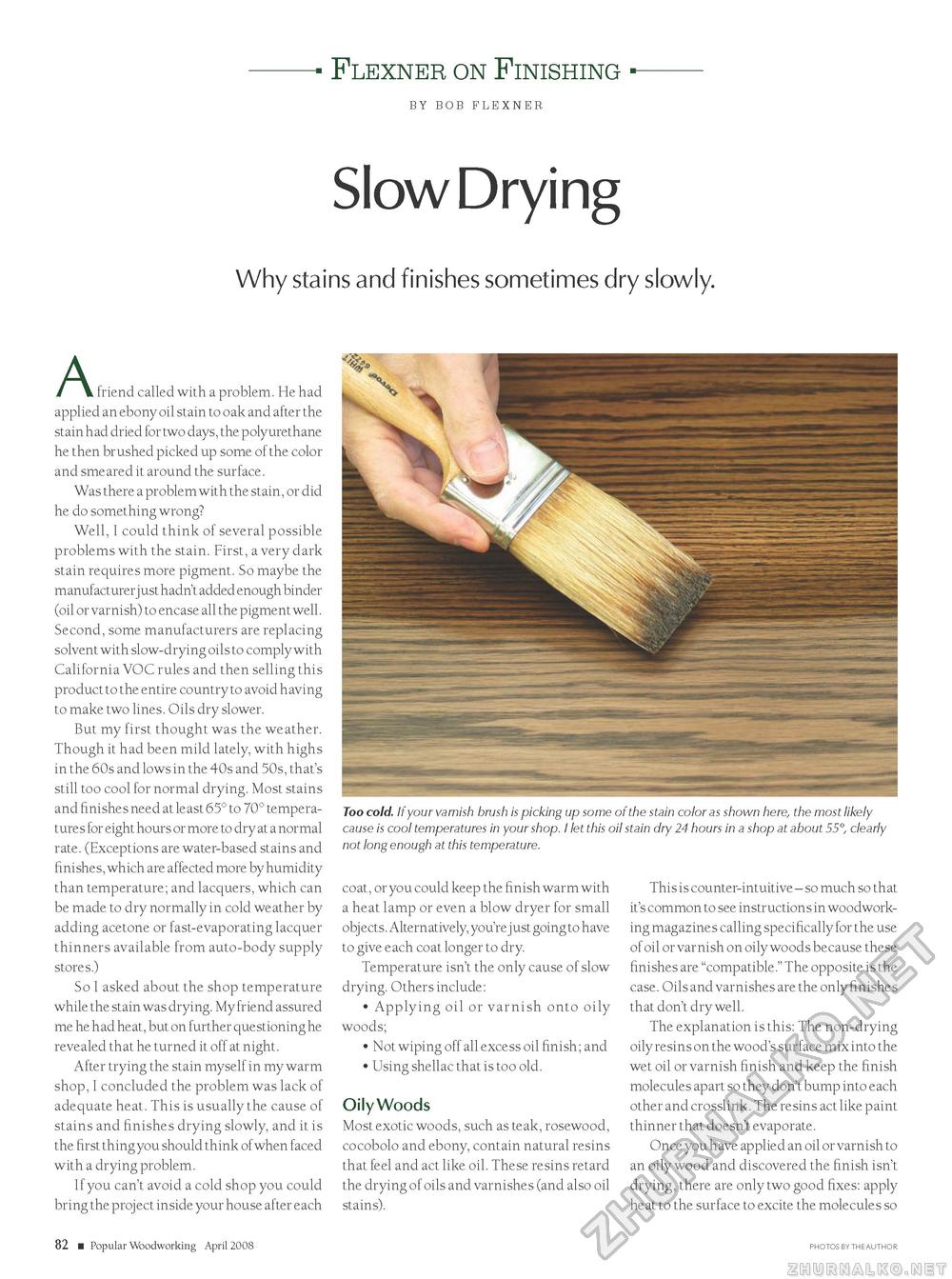Popular Woodworking 2008-04 № 168, страница 92
-- Flexner on Finishing -- BY BOB FLEXNER Slow Drying Why stains and finishes sometimes dry slowly. A, i friend called with a problem. He had applied an ebony oil stain to oak and after the stain had dried for two days, the polyurethane he then brushed picked up some of the color and smeared it around the surface. Was there a problem with the stain, or did he do something wrong? Well, I could think of several possible problems with the stain. First, a very dark stain requires more pigment. So maybe the manufacturer just hadn't added enough binder (oil or varnish) to encase all the pigment well. Second, some manufacturers are replacing solvent with slow-drying oils to comply with California VOC rules and then selling this product to the entire country to avoid having to make two lines. Oils dry slower. But my first thought was the weather. Though it had been mild lately, with highs in the 60s and lows in the 40s and 50s, that's still too cool for normal drying. Most stains and finishes need at least 65° to 70° temperatures for eight hours or more to dry at a normal rate. (Exceptions are water-based stains and finishes, which are affected more by humidity than temperature; and lacquers, which can be made to dry normally in cold weather by adding acetone or fast-evaporating lacquer thinners available from auto-body supply stores.) So I asked about the shop temperature while the stain was drying. My friend assured me he had heat, but on further questioning he revealed that he turned it off at night. After trying the stain myself in my warm shop, I concluded the problem was lack of adequate heat. This is usually the cause of stains and finishes drying slowly, and it is the first thing you should think of when faced with a drying problem. If you can't avoid a cold shop you could bring the project inside your house after each Too cold. If your varnish brush is picking up some of the stain color as shown here, the most likely cause is cool temperatures in your shop. I let this oil stain dry 24 hours in a shop at about 55°, clearly not long enough at this temperature. coat, or you could keep the finish warm with a heat lamp or even a blow dryer for small objects. Alternatively, you're just going to have to give each coat longer to dry. Temperature isn't the only cause of slow drying. Others include: • Applying oil or varnish onto oily woods; • Not wiping off all excess oil finish; and • Using shellac that is too old. Oily Woods Most exotic woods, such as teak, rosewood, cocobolo and ebony, contain natural resins that feel and act like oil. These resins retard the drying of oils and varnishes (and also oil stains). This is counter-intuitive - so much so that it's common to see instructions in woodworking magazines calling specifically for the use of oil or varnish on oily woods because these finishes are "compatible." The opposite is the case. Oils and varnishes are the only finishes that don't dry well. The explanation is this: The non-drying oily resins on the wood's surface mix into the wet oil or varnish finish and keep the finish molecules apart so they don't bump into each other and crosslink. The resins act like paint thinner that doesn't evaporate. Once you have applied an oil or varnish to an oily wood and discovered the finish isn't drying, there are only two good fixes: apply heat to the surface to excite the molecules so 82 ■ Popular Woodworking April 2008 PHOTOS BY THEAUTHOR |








